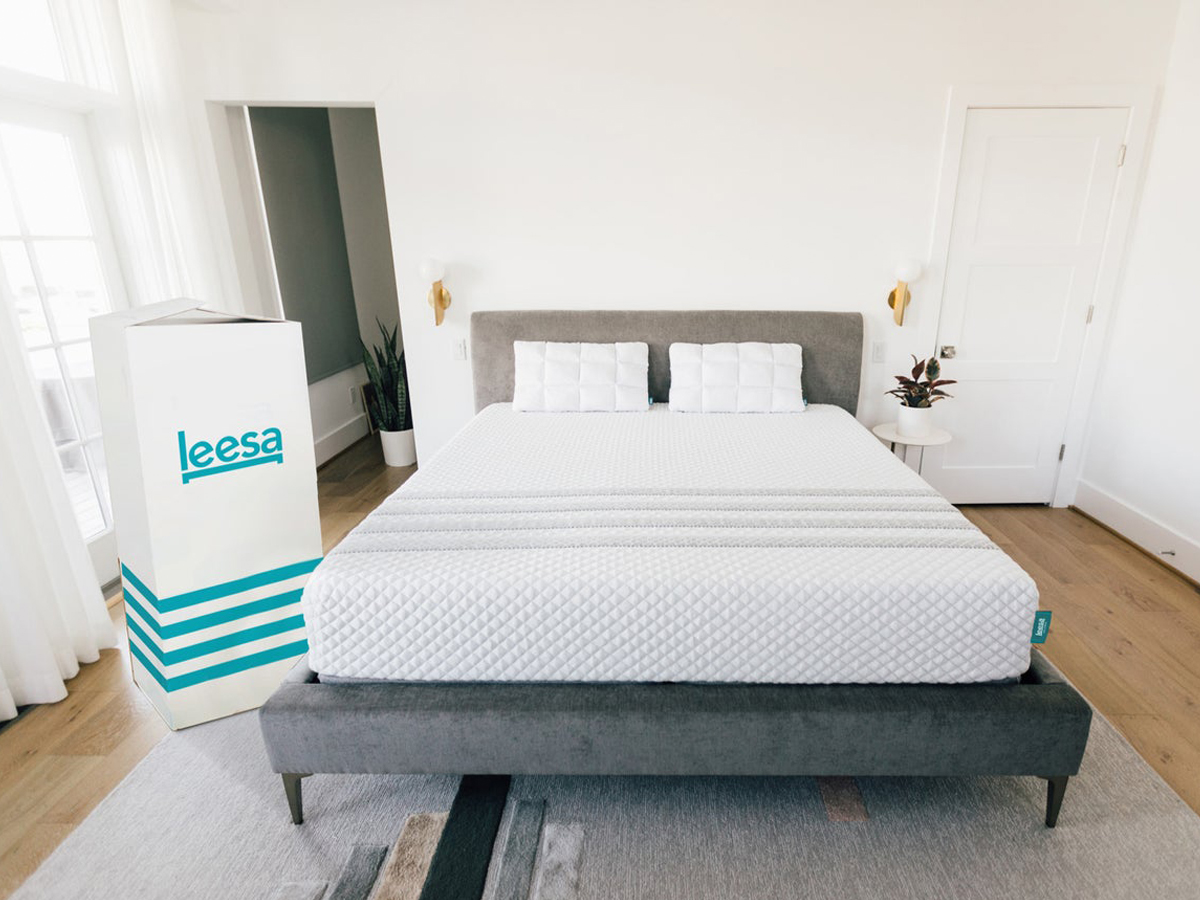- A high-quality mattress should last for more than a decade, provide the right balance of comfort and support for your body type and sleeping style, and offer superb motion transfer isolation.
- The Leesa Hybrid Mattress is our top pick in 2020 because it sleeps cool, has impressive edge support, and features motion isolation so good that you won’t notice when your partner gets up in the morning.
- Many of these mattresses are made with foam or a mix of foam and spring, so if you’re looking for one with just springs, check out our guide to the best spring mattresses.
- And if you’re shopping around for good mattress deals, here’s where you’ll find current sales.
- Check out Business Insider Coupons for potentially even more savings.
One of the most important purchases you will make in your life is a mattress. The cliché that you spend a third of your life sleeping may be tired, but it’s true.
As someone who has spent years and hundreds of nights (and afternoons) testing mattresses for a living, I’ve found that one of the biggest mistakes shoppers make is putting too much emphasis on the price tag. Budget is definitely a factor when purchasing anything in life, but with mattresses, you should pay attention to the risk-free trial period and return policy instead.
We can tell you all about what to look for when mattress shopping, but the best way to tell if a bed is right for you is to sleep on it for a while. Fortunately, most of the brands we’ve tested offer trial periods of at least 90 nights and offer a full refund if you decide the mattress isn’t right for you.
Most mattresses also have warranties of at least 10 years, so if you splurge on a $2,000 mattress, that works out to about 50 cents per day over the life of the warranty – and I’d say that your comfort is worth at least that. They also have also financing options of their own or work with a place like Affirm to help pay off large purchases over time.
In order to determine the best mattresses on the market, we put each mattress through an extensive range of tests. We also look closely at a mattress’s trial period, warranty, in-home delivery/white-glove service, and the type of foundation needed for best performance. If you’d like to read our full testing methodology before diving into the products, you can do so here.
Along with testing out dozens of mattresses, we researched countless expert and buyer ratings and reviews of the top brands while researching this guide. Our guide features mattresses that performed well in our tests, have long trial periods, and are designed to suit a broad range of sleepers.
All of the prices listed in our guide are for the queen size. You can follow our links to find the prices for other mattress sizes.
The best mattresses you can buy in 2020:
- Best overall: Leesa Hybrid Mattress
- Best for hot sleepers: Tempur-Pedic PRObreeze Mattress
- Best all-foam mattress: The Casper Original Mattress
- Best for back pain: Saatva Classic Mattress
- Best eco-friendly mattress: Birch Mattress by Helix
- Best ultra-firm mattress: Plank Mattress by Brooklyn Bedding
- The best budget mattress: Zinus Cooling Gel Memory Foam Mattress
Prices and links are accurate as of 7/10/20. We've also added the Zinus Cooling Gel Memory Foam Mattress after testing and adjusted copy to better highlight why we recommend these mattresses. We've also tested all five of Casper's newest mattresses and will consider them for this guide.
The best overall
The Leesa Hybrid Mattress is the best mattress for exceptional motion transfer isolation and edge support. It has the perfect balance of comfort and support for a broad range of sleeping styles and body types.
For about a year, the Leesa Hybrid Mattress, formerly known as the "Sapira," was the bed my wife and I slept on when I wasn't testing other models. My wife is tall and weight-proportional. She sleeps on her back. I'm six feet tall and weigh 250 pounds and sleep on my stomach and side. This mattress is the most comfortable of the countless varieties I've tested.
I usually overheat in bed, but the Leesa Hybrid keeps me cool at night by dissipating the heat. It's ideal for couples thanks to its outstanding edge support and superb performance in the motion transfer tests I put it through.
The firmness level of the Leesa Hybrid is right around average. The company recommends using a "firm, flat, and sturdy" foundation. I used the Leesa Foundation, which did the job but had several minor annoyances you can read about in my full review of the Leesa Hybrid.
The mattress is backed by a 10-year warranty, and Leesa offers a 100-night risk-free trial. You can also choose the white glove service for $150, which covers setting up your mattress and foundation and removing your old bed. Though the mattress is bulky and hard to move around, most individuals in good health should be able to set it up with the help of a friend.
Slumber Yard recommends the Leesa Hybrid for stomach and back sleepers who want a great combination of springs and soft memory foam feel. The reviewer was impressed with how well-made, comfortable, and supportive the bed is.
Wirecutter also recommends this model because of the pressure relief afforded by the memory foam and the subtle bounce of the coils. The reviewer found the bed had excellent cooling abilities and worked for side, stomach, and back sleepers along with people who weigh over 200 pounds.
Pros: Works for a broad range of sleepers, excellent heat dissipation properties, extraordinary motion isolation, impressive edge support
Cons: Petite side sleepers may find the mattress is too firm
Read our full Leesa Hybrid Mattress review
The best for hot sleepers

If heat-trapping mattresses have kept you tossing and turning through the night, the Tempur-Pedic PRObreeze Mattress will help you rest easy with its cooling benefits.
The Tempur-Pedic PRObreeze Mattress is what my wife and I currently sleep on when we're not testing other brands. It's passed all of my motion transfer tests, and I don't even notice when my wife gets up before me in the morning. Though I've found it holds my body heat when I come back from using the bathroom at night, overall, the PRObreeze sleeps cooler than most mattresses.
The PRObreeze is 12 inches thick and features a cooling cover, Purecool+ phase change material, a Tempur CM+ comfort layer, and the original Tempur material support layer. It's also available as a hybrid, which is what I have. Tempur-Pedic offers a 90-night risk-free trial and 10-year warranty. Plus, you can try it out in hundreds of stores across the country.
Tempur-Pedic supplies free white glove delivery, which was incredibly helpful since our king mattress is a bit much for even two people to carry. We use the Tempur-Ergo Extend with Sleeptracker as the foundation, which is worth the investment if you like to watch TV or read in bed. And, if you are looking for an even cooler sleeping solution, consider the PRObreeze's sibling the LUXEbreeze, which is designed to be up to 5 degrees cooler.
Pros: Good cooling, impressive motion isolation, great for side sleepers and petite individuals, free white glove delivery
Cons: Expensive, questionable edge support, only available in medium firmness
Read our full Tempur-Pedic PRObreeze review
The best all-foam mattress
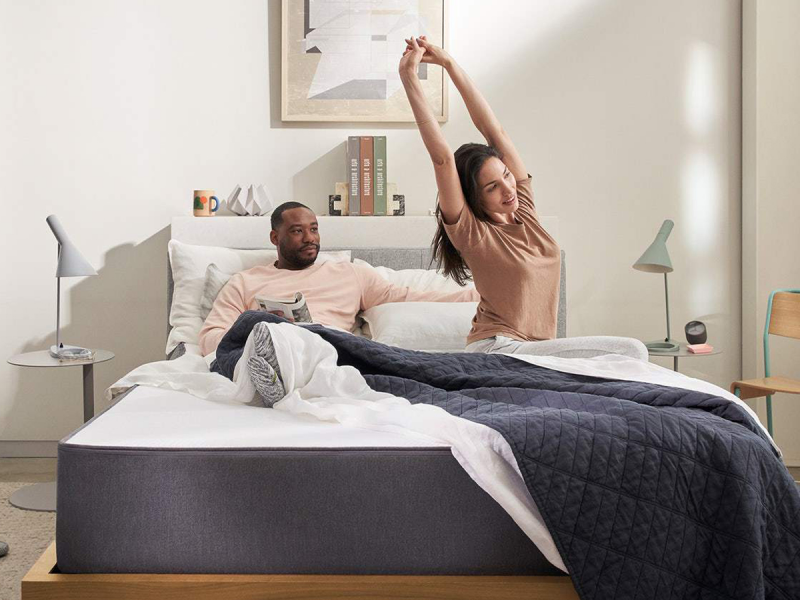
The Casper Original mattress has a firm feel that provides excellent support right to the edge, and it will keep your body cool through the night.
Last year, Casper updated its best-selling all-foam mattress with a zoned-support layer, which provides specialized pressure relief to targeted body parts. The slightly firmer than average support is ideal for back and stomach sleepers, but it was significantly less comfortable when I moved to my side. The firmness also rendered the bed less bouncy but made rotating the mattress and moving around on it easier.
The Casper Original passed my motion transfer test with flying colors. And, I found the edge support was also impressive. Plus, on hot summer nights, the breathable design kept my usually overheating body nice and cool. You can check out my full review here. I've also tested and recommended the Casper Hybrid mattress, which you can read about here.
Consumer Reports recommends the Casper Original Mattress as the "best buy" and best overall memory foam mattress. In the review site's tests, the mattress was excellent for petite side and back sleepers and very good for average and large individuals. After eight years of simulated use, the mattress only showed minor changes in performance. The only negative noted was the lack of grips, which could make moving the mattress difficult.
Sleepopolis and Sleep Advisor also recommend the Casper Original Mattress. And Wirecutter does as well but only if you are looking for a medium-firm foam mattress and "don't mind possibly overpaying for it."
Pros: Includes 100-day risk-free trial, has great edge support, has excellent motion transfer dampening, offers firm support, breathable open-cell foam top layer helps keep you cool
Cons: Has very little bounce, might be too firm for side sleepers
Read our full Casper Mattress review
The best for back pain
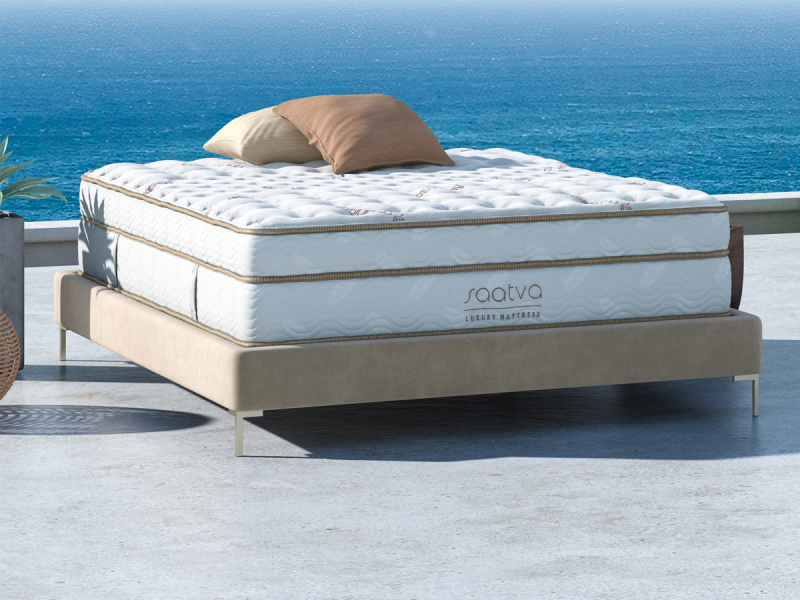
The Saatva Classic Mattress provides luxurious comfort with its plush top and is designed to suit an array of sleeping styles.
The Saatva Classic Mattress comes in six standard sizes, two thicknesses (11.5 inches and 14.5 inches), and three firmness levels: plush soft, luxury firm, and firm. Saatva also sells a frame, foundation, and adjustable base to go with your mattress.
The individually-wrapped coils offer impressive support to the bed's edge. Also, no matter your sleep style, there's sure to be a firmness level that caters to you. The bed is backed by a 15-year warranty and a 120-night trial, though if you decide to return the mattress, a $99 transportation fee is deducted from your refund.
Insider Reviews' Kylie Joyner loved the "Goldilocks" feel of support and comfort of the Saatva Classic Mattress. She and her partner have experienced decreased back pain since sleeping on the luxury firm bed. And, she rested easy knowing the company uses environmentally-friendly materials to manufacture its mattress in the United States.
Sleep Advisor, Mattress Clarity, Sleepopolis, Tuck, and Wirecutter all recommend the Saatva Classic. Wirecutter ranks it as the best spring mattress. The reviewer liked that the pocket coils and plush top afforded a pleasant combination of bounce and softness. The delivery experience was convenient with the mattress coming fully expanded. Yet, since the Euro top is susceptible to body impressions, she warns against heavier individuals purchasing this model.
Though they were tired of the high-pressure in-person mattress shopping experience, several Saatva buyers were resistant to buying a mattress online at first. But, the high-quality feel of the materials won them over. Thanks to the comfort of his luxury firm mattress, one buyer noted that he looks forward to bedtime now. Another reviewer using a sleep-tracker app discovered that her sleep per night went from three or four hours to six or seven hours with the purchase of this bed.
Pros: Free in-home delivery and mattress removal, three firmness levels, plush softness, nice bounce, 120-night trial
Cons: Fees associated with returns, not the best for people weighing more than 200 pounds
Read our full Saatva Classic Mattress review
The best eco-friendly mattress
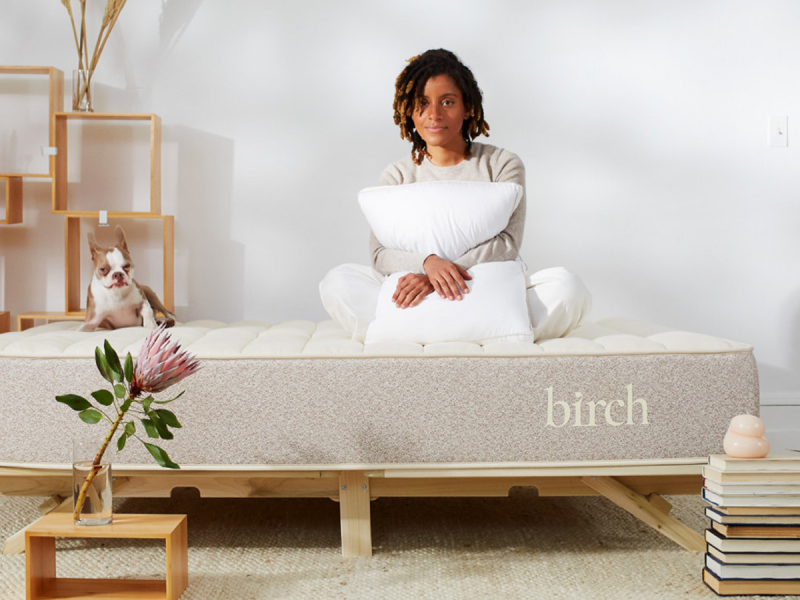
The Birch Mattress uses all-natural materials like organic wool and latex from rubber trees.
The Birch Mattress comes from Helix, which is known for offering a wide array of excellent mattresses, including the Helix Dusk and the Helix Luxe Dusk. The Birch is positioned as an earth-friendly alternative using organic cotton, wool, natural latex, and high-quality steel. The mattress comes with a 100-night sleep trial and a 25-year warranty.
I've tested the Birch Mattress with and without the optional $400 plush pillow top. Without the pillow top, the mattress has above-average firmness, which felt great when I slept on my stomach. With the top, sleeping on my side was much more comfortable. The bed passed my motion transfer tests and offered outstanding edge support. I also found it does a good - not great - job of dissipating heat.
Sleepopolis recommends the Birch Mattress because it has fantastic bounce and the firmness works well for stomach and back sleepers. The reviewer also appreciated that the mattress is made of all-natural elements and is Greenguard Gold certified. However, he doesn't think the mattress without the pillowtop is good for side sleepers. Sleep Sherpa recommends this model if you're looking for a mattress made of renewable materials, that doesn't contain foam, and is temperature neutral.
Buyers like that the mattress is made with natural, organic materials, which makes it so the bed doesn't have an off-putting odor when it comes out of the packaging. One person shared her story of dealing with hip pain. At first, the Birch mattress with the pillow top helped, but after about a month and a half, the pain came back. Birch worked with her to provide another layer of soft latex, which seemed to relieve the pressure points.
Pros: Greenguard Gold certified, made of natural materials, exceptional bounce, very good motion transfer isolation, above-average firmness, optional plush pillow top for a softer feel
Cons: Not ideal for side sleepers without the pillow top
The best ultra-firm mattress
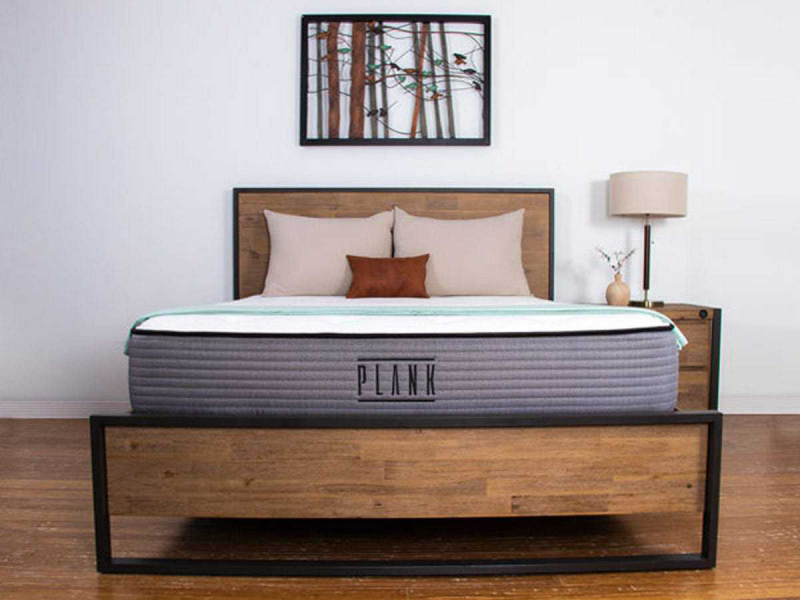
If the idea of sleeping on the floor sounds more appealing than most beds, the Plank Mattress should give you the ultra-firmness you seek.
The Plank Mattress is made by Brooklyn Bedding, a mattress company that manufactures an array of top-rated beds and bedding. The Plank is about as firm as it gets. The top side is just firm, while the bottom side is extra firm. So, you can flip the bed to achieve your optimal feel. You can also choose to add a cooling top layer to the extra firm side.
Senior reporter Owen Burke tested the Plank. After having lived in Taiwan and growing accustomed to an ultra-firm bed, it was the first truly-firm mattress he'd found in the Western Hemisphere. He preferred the ultra-firm side. You can read his full review here.
Tuck recommends the Plank Mattress to heavier stomach and back sleepers because it's so firm. In the review site's tests, the mattress was durable, provided good motion isolation and edge support, was quiet, had minimal off-gassing, and slept cooler than other all-foam models. The main negatives were that the 120-night sleep trial required a 30-night break-in period, and the mattress doesn't tend to conform to the contours of your body.
You really can't go wrong with a Brooklyn Bedding mattress. If ultra-firm isn't your thing, consider its softer Aurora mattress.
Pros: Great for heavier back and stomach sleepers, incredibly firm, great motion isolation, exceptional edge support, two levels of firmness
Cons: Not the best for petite individuals or side sleepers, doesn't contour to your body
Read our full Plank Mattress review
The best budget mattress
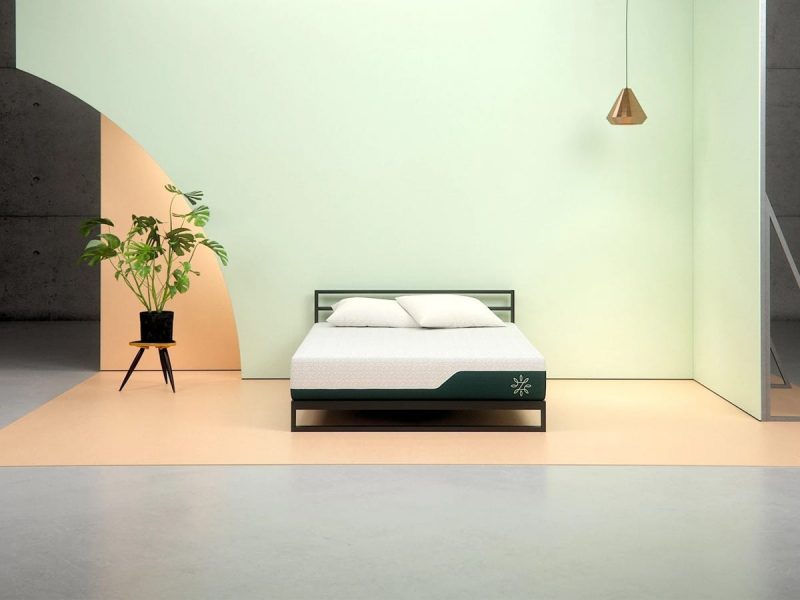
Back and stomach sleepers who are looking for a budget-friendly bed should strongly consider the Zinus Cooling Gel Memory Foam Mattress. A 14-inch deep California King is just under $500.
The Zinus Cooling Gel Memory Foam Mattress features one of my favorite materials to sleep on: gel memory foam. It does an outstanding job of keeping my hot-sleeping body cool through the night.
The gel memory foam contours to my body while still providing a firmer than average support. Because of this, I felt better sleeping on my stomach during testing, rather than my side, which I usually sleep on. Back sleepers may also like the firmness of this model.
The Cool Gel Memory Foam Mattress passed my motion transfer test with flying colors. My wife and dog were also able to sneak into bed without disturbing or waking me.
The mattress comes in Twin, Full, Queen, King, and Cal King, and you can choose from four thicknesses - 8, 10, 12, and 14 inches. I tested the 14-inch Queen. In general, I've found that mattresses that are 10 inches or thinner aren't as comfortable because they sink in so much, so you should consider the thicker styles.
With prices starting under $200 for an 8-inch Twin and topping at under $500 for a 14-inch King, it's natural to expect compromises. And there are a few, but they're easy to look past if you want to save a few hundred dollars.
First of all, the edge support is awful. It's hard to lie close to the edges and not fall off. The mattress also took a week to expand to its full size. The directions say it will only take 72 hours - which is still longer than most others I've tested - but that was not my experience.
Since the mattress comes with a 100-night trial, it's worth giving a try if you're looking for a low-cost solution. And if you decide to keep it, you're covered by a 10-year warranty.
Pros: Affordable, 100-night trial, 10-year warranty, made of cooling gel memory foam, excellent motion isolation, four thickness options, great for back and stomach sleepers
Cons: Took a week to expand to full size, poor edge support
How we test mattresses
I've personally tested more than a dozen brands, and with the help of my Insider Reviews colleagues, we've tested all of the top online mattresses.
Each bed I receive goes through a series of tests, and for the ones I haven't personally tested, I've extrapolated the key performance indicators based on our team's reviews along with expert testing from sites like Sleepopolis and Consumer Reports.
Here are the main attributes we look for and how we test them:
Firmness: For many buyers, this is a key consideration. Yet, there isn't really a standard way to measure firmness. A mattress maker's firmness claims are often hit or miss. I prefer an average firmness, and the main bed that I sleep on has an average rating based on my experience and expert ratings. Any new mattress that comes in is compared to my main baseline mattress to determine its firmness level.
Sleeper type: Back, stomach, and side sleepers will all have different preferences. I'm a side sleeper, but I often sleep on my stomach on firmer mattresses. My wife is a back sleeper. Our subjective sleeping experiences on a particular bed will determine the type of sleeper that will benefit most from the mattress.
Sleep temperature: Most beds-in-a-box feature some type of memory foam, which tends to trap heat. This can lead to a night of tossing and turning. So, to determine heat dissipation, I first lay on the bed for at least an hour. Next, I get up for about five minutes leaving the bed uncovered. I then return to assess how warm it feels. I combine these results with my comfort temperature-wise while sleeping on the mattress to form an overall opinion of the heat dissipation properties.
Edge support: Edge support is important if you like sitting on the side of your bed when putting on shoes or if you sleep with someone who tends to take up a lot of bed space. To test edge support, I sit on the edge of the bed and gauge how much it sinks. I also lie on the side of the bed and slowly rotate closer to the edge until I fall off. I note how secure I feel on the edge and how far I can go without falling.
Motion transfer: If you share a bed with someone or have pets, you don't want their nocturnal movements to disturb your sleep. This is where motion transfer isolation is important. To assess this, I place a 12-ounce can of pop in the middle of the mattress. Next, I drop a 20-pound weight from approximately four feet above the bed so that it lands 12 inches from the pop can. I do this a few times. If the can falls over consistently, the motion isolation isn't very good. If it stays upright, we have a good motion dissipating mattress.
Moving the mattress: If you move often or want to rotate your mattress regularly to improve its longevity, it needs to be easily movable. I test movability by rotating the mattress a few times and taking it from one room to another. I pay close attention to how much effort it requires.
How to pick the right mattress for you
There are a ton of things to consider when buying a mattress, including firmness, materials, warranties, return policies, and whether to go with a direct-to-consumer mattress startup or a big-name brand. We break it down for you below:
Finding the right level of firmness
Before you buy, you'll want to know what level of firmness is best for you. Side sleepers tend to like medium-to-soft mattresses, while back and stomach sleepers prefer firmer mattresses.
While your first reaction might be to get the plushest mattress out there, the fact is that sometimes ultra-soft mattresses can be bad for your back. On top of that, if you're half of a couple, you'll need to take into consideration what your partner wants, too. If you've got a big budget, you can go with a high-end mattress that allows for adjustments to be made on each side of the mattress.
Look for a good return policy or a long trial period in case the mattress you thought you wanted doesn't work out for you. Mattress choice is deeply personal and varies widely from person to person.
What kind of mattress do you want?
There are a lot of different mattress types, but Sleepopolis breaks them down extremely well. We've summarized each type of mattress below based on the site's expert mattress buying guide:
- Hybrid mattresses combine memory foam and latex with spring coils and other materials to appeal to a wide range of sleepers. These mattresses are great all-around options for couples.
- Latex foam mattresses are best known for being cooling, bouncy, and responsive.
- Memory foam mattresses conform to your body's needs and offer excellent support. They're huggier than other mattresses, so they may not appeal to hot sleepers.
- Innerspring or Coil mattresses are more old-fashioned and traditional, but they're great for strong support and durability. If you sleep on the edge, coil mattresses are good for you.
- Pillow-top mattresses are ideal for people who like soft, cushy mattresses. Pillow-top mattresses can have springs underneath or not, but they always have a fluffy, pillowy top for extra softness.
- Adjustable mattresses let you choose and alter the position and firmness of your bed and some even vibrate or massage you while you sleep. These are pricey but can be great for people with back problems.
Pro tip: Don't fall for big-name brands or add-ons
Anyone who's ever shopped for a new mattress has probably wondered why on earth these things are so expensive. As Wirecutter and Slate explain, it's all about marketing costs, brand recognition, crazy profit margins, and monopolies in the mattress market. In the US, you have four major brands owned by two companies: Simmons and Serta vs. Tempur-Pedic and Sealy.
Often, these companies seem to be your only choices, so you end up paying a premium and the big brands end up reaping a killer profit. However, now there are dozens of mattress startups out there that are direct to consumer, offer great warranties, have long return windows, and low prices. We recommend you stay away from the big names and buy from one of these great startups.
You'll also want to consider if you want any add-ons like a mattress cover, mattress pad, sheets, and so on. In the process of buying a mattress, you'll likely be pitched all kinds of different accessories to get, and if you don't go in with a clear idea of what you want, it's easy to fall victim to those pitches and spend way more money than you thought you would. It's best to buy everything else separately, so go to the last section in this guide to learn about our other great buying guides for bedding.
Check out our other mattress buying guides
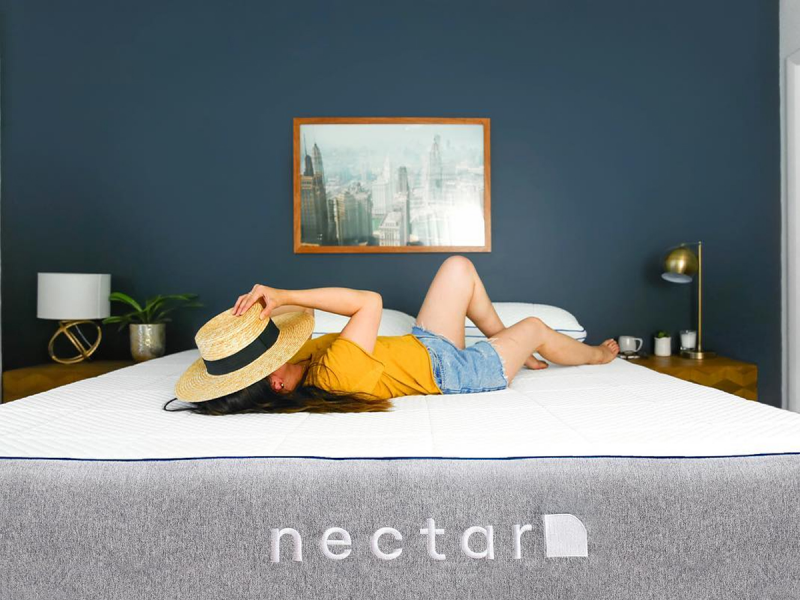
The best spring mattress you can buy
If you're leaning toward a traditional spring mattress (also called an innerspring mattress), we have five great recommendations, including our favorite, the Saatva Classic because you can try it for 120 nights, there are three firmness options, and the company offers free in-home set-up and mattress removal.
The best mattresses for side sleepers
Finding the perfect mattress is tough for side sleepers. Regardless of which one you choose from our favorites, though, we're confident that you'll get a good night's sleep. And if you find that these mattresses don't work for you, rest assured that they come with a sleep trial so you can take these beds for a test run before making a long-term commitment.
The best mattresses for back pain
If you've suffered long enough with back pain, it's time to wake up to the advantages of a supportive, quality mattress. Choosing a new mattress can be a chore, however, there's no doubt about it. Here are the best mattresses for back pain.
Check out our bedding guides
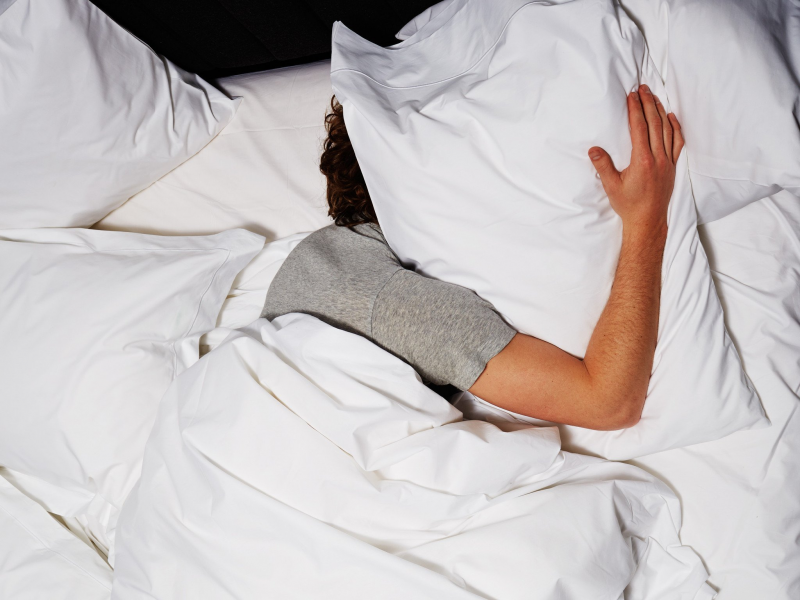
The best sheets
Few would deny that at the end of a long, hard day, sliding into a comfortable bed outfitted with soft, smooth sheets that pamper your skin is one of life's greatest pleasures. After reviewing dozens of contenders for the best sheets, we've narrowed it down to our favorites.
The best mattress toppers
Although a mattress topper isn't a must-have for your bed, it's one of the easiest ways to up your sleep quality and comfort. We tested and researched dozens of mattress toppers and determined that these are our favorites.
The best pillows
A good pillow means a good night's sleep. We tested dozens of pillows to narrow down the choices to the ones you'll love best. From down pillows to memory foam and everything in between, here are the best pillows you can buy.
